Indian ingenuity has produced all manner of global phenomena over the centuries. From turning the levers of international trade to harnessing the soft power of the long-drawn ‘Om’, these cultural innovations have coloured our identities as Indians. Here are just a few artistic and cultural ideas born in India and loved by the world.
Rock-cut architecture
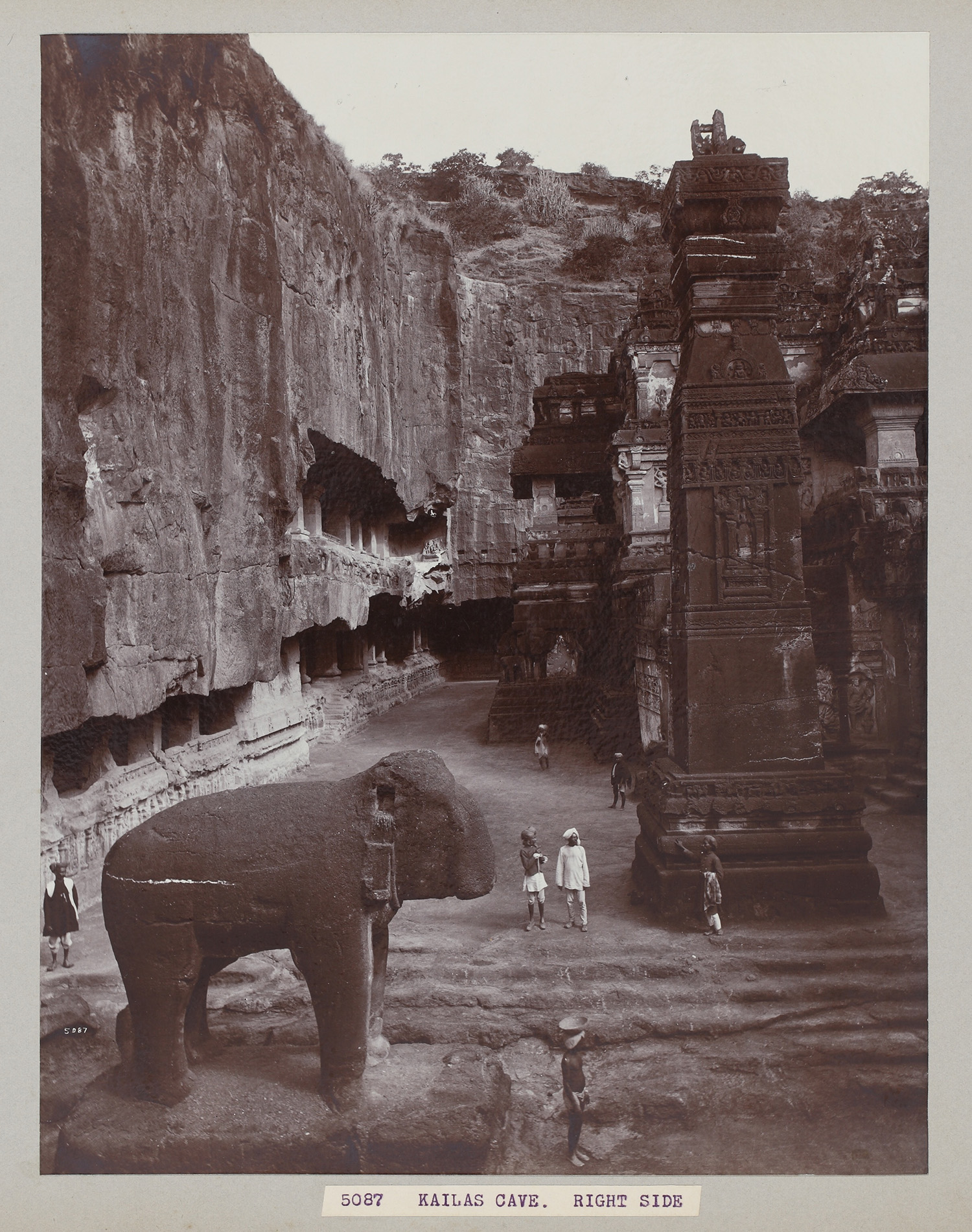
Kailash Cave Temple, Ellora, 1888, Raja Deen Dayal & Sons, image © Sarmaya Arts Foundation
Rock-cut architecture is sculpture on a colossal scale. The oldest such structures in India are cave shrines carved from monolithic rockfaces. Out of craggy cliffs and hills, architects and sculptors chiselled out temples and monasteries, shrines and chambers, refectories and storerooms. There are over a thousand such excavations in India, most of which served as shrines or rest-stops for Buddhists, Hindus and Jains; rock-cut cave complexes were often built along trade routes. The earliest samples of rock-cut architecture are found in Barabar and Nagarjuni hills, Bihar, quarried during the reign of Ashok in 200 BCE. Successive empires continued to commission these ambitious projects. The cave complexes at Ajanta, Ellora, Karle, Bhaja and Kanheri showcase the high degree of refinement and precision that this art form had attained. As Buddhism spread into places like present-day China and Afghanistan, rock-cut shrines began to take shape near major metropolitan centres. Among the best known of these were the now-destroyed ‘Bamiyan Buddhas’.
Calico
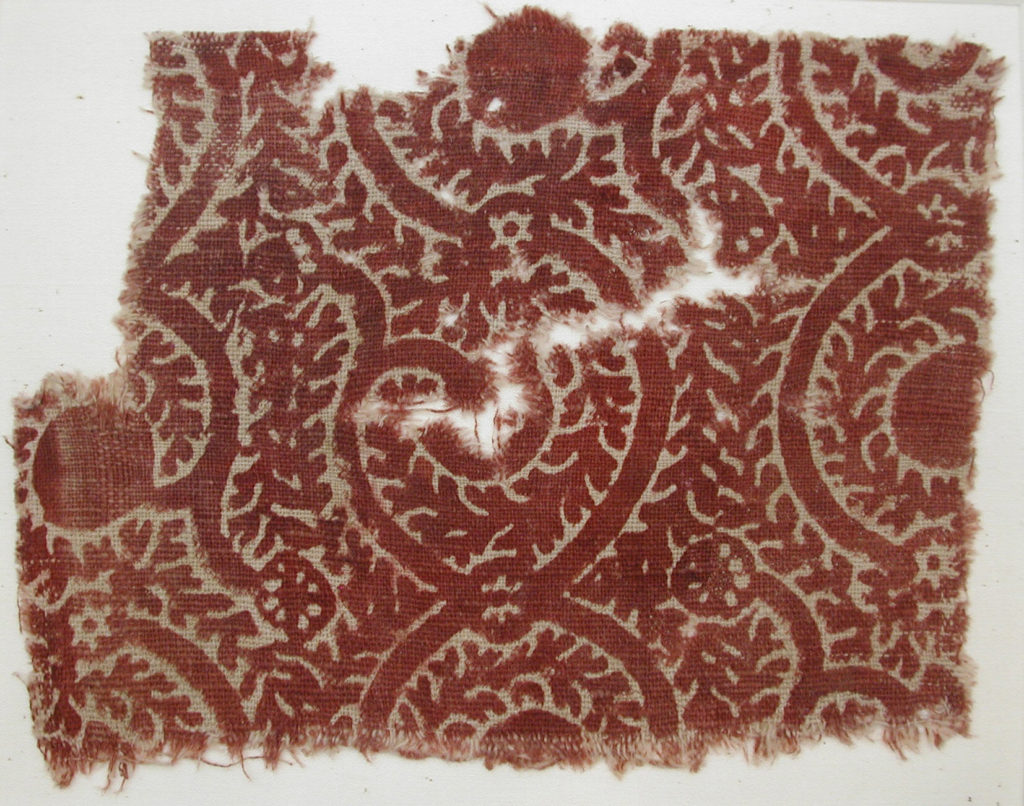
Textile Fragment, 14th–15th century, Made in India, Gujarat. Found Egypt, near Fustat, image from The Metropolitan Museum of Art/Public Domain
In the previous millennium, calico was more currency than cloth. The cotton textile named for the city of Kozhikode (formerly Calicut) in Kerala was an important commodity of trade. The oldest Indian calicoes were discovered at Fustat, Egypt. Some of the Fustat fragments have been carbon-dated to the 8th century. Calico cloth was spun from unbleached cotton, decorated with organic dyes. It offered an infinite variety of qualities, from fairly fine and sheer to the coarser, stronger kinds. Calico was cheap, colourful and as popular in the East (they were worn by the wealthiest merchants in China) as the West. Its popularity threatened the local textile industries of England and France, where it was eventually banned in the early 1700s. These protectionist laws, known as the Calico Acts, were a trigger for the Industrial Revolution.
Refined sugar
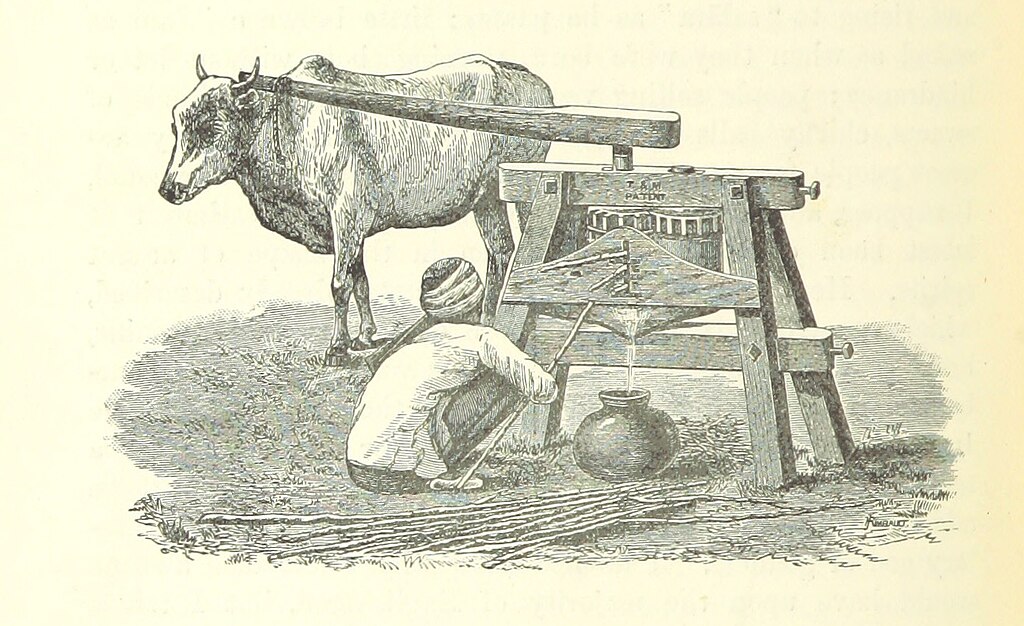
Sugarcane mill driven by bullock, from ‘India, Past and Present’, 1890, by James Samuelson and William Wilson Hunter, image from British Library/ Public domain, via Wikimedia Commons
The super-villain of India’s diabetes epidemic actually started its life as a cure. Ayurvedic texts such as Charaka Samhita and Sushruta Samhita talk about sugarcane and sugar in a fairly medicinal manner, and Mahabhashya by Patanjali (200 BCE) contains three recipes with sugar as an ingredient. Reducing sugarcane to jaggery, and jaggery to crudely refined sugar, in a liquid-to-solid operation, had become common practice by the 5th century, under the Gupta empire. Travelling Buddhist monks took it to China, where it was fully crystallised. Urban legend has it that’s where the Hindi word for sugar, ‘cheeni’, gets its root. The introduction of bitter beverages such as coffee (from Africa), tea (from Asia) and chocolate (from the Americas) to Europe, in the late 16th century, also spurred a heavy demand for sugar, which was met by the labour of slaves on colonial plantations.
Chess
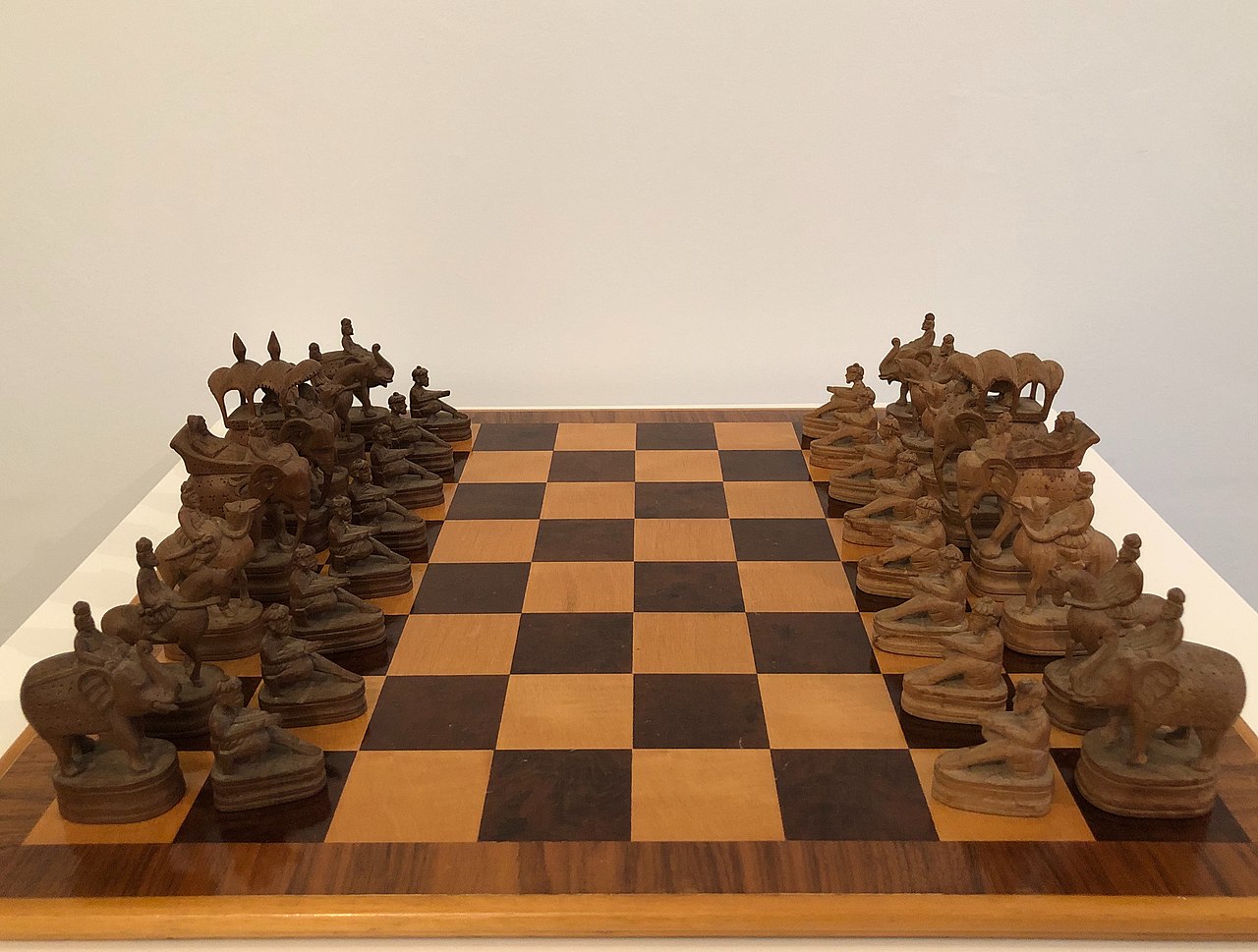
Chaturanga chess set, photo by Chaturaji/CC BY-SA 4.0
Chess began as a game of tactical simulation with elephants, chariots and ministers of war, and evolved into a tool for military strategy, a metaphor for human affairs, and a benchmark for genius. Its earliest form is recorded to be chaturanga (four divisions), which was played on an 8×8 ashtapada board, in 6th-century north-western India. Chaturanga had two attributes in common with modern chess: different rules governed the movement of each character on the board, and the fate of one piece determined victory. Chaturanga became shatranj by the time it reached Persian shores and by the 15th century, it had acquired its present form. Arab historian Al-Masudi (900 CE) famously said that chess was a game that symbolised human free will.
Meditation
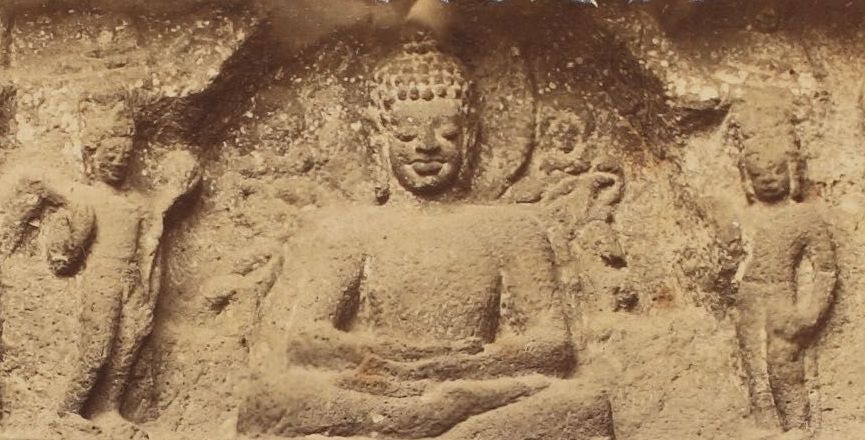
Meditating figure from the bas reliefs at Karle Caves, Lonavala, c.1850-1870, William Johnson and William Henderson © Sarmaya Arts Foundation (2016.3.1 (10))
Artistic references to meditation in the Indian subcontinent go further back than literary ones. Sculptures and steatite seals uncovered in Mohenjodaro and Harappa (3500 BCE) show people with half-closed eyes, sitting in the lotus posture. In texts, meditation finds mention in the Rig Veda (1500 BCE), Mundaka Upanishad, Shvetashvatara Upanishad, Bhagavad Gita, and the Yoga Sutra of Patanjali (200 CE). It is prescribed in Hinduism, Buddhism, Jainism and Sikhism to help calm the fluctuations of the mind. Today, the practice has evolved to embrace different forms, like transcendental meditation, yoga, tai chi, qigong, breathing exercises and chanting.
Sitar
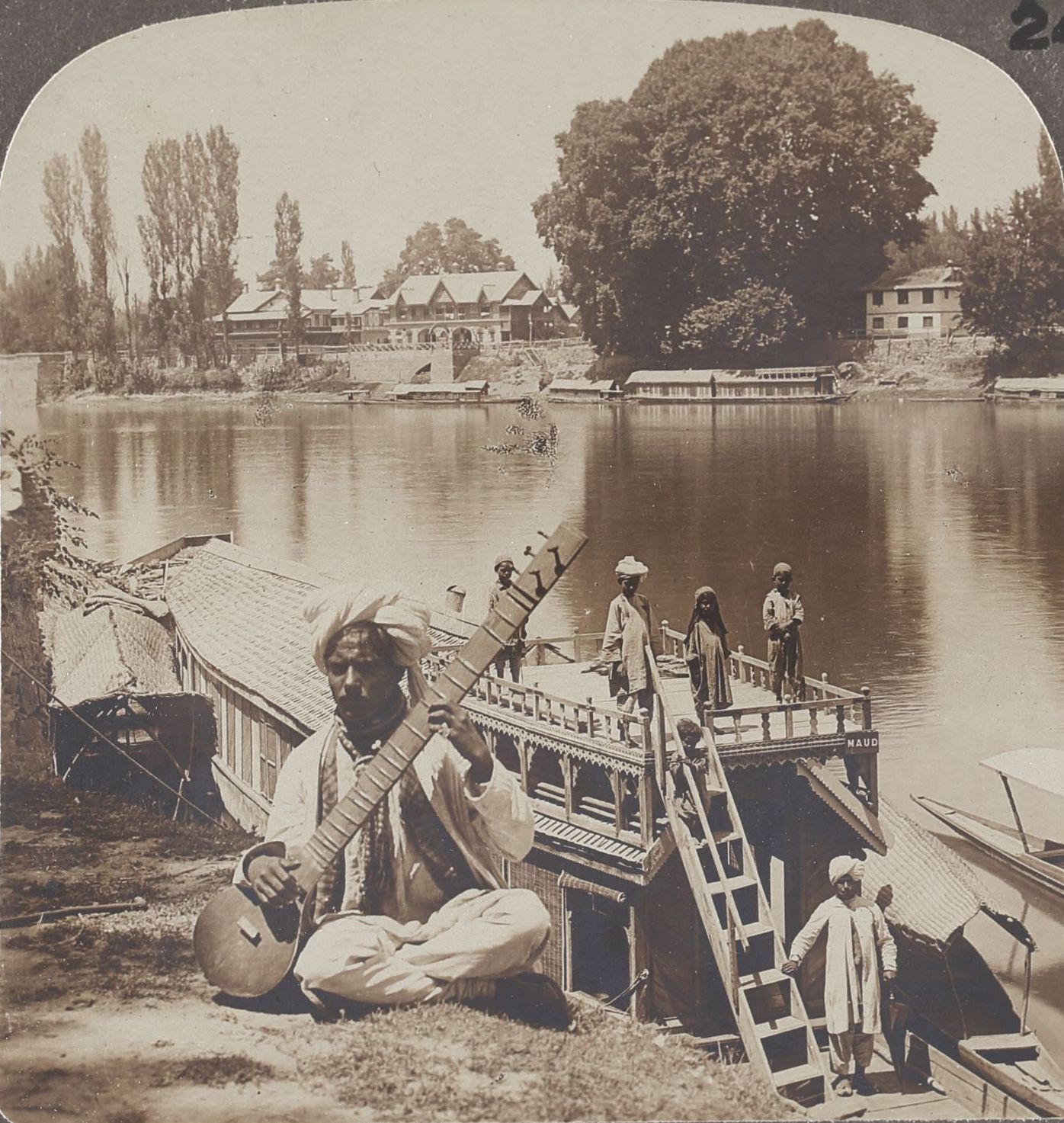
Man playing sitar on the banks of the Jhelum river in Kashmir, 1900s, published by Underwood and Underwood, silver gelatin print mounted on a stereo card, © Sarmaya Arts Foundation. (2017.15.1 (24))
Music historians identify the predecessor of the sitar as a long-necked lute from Persia (setar), Turkey (tambur) or Central Asia (Uzbek dutar), which came to be used in north-western India and the Mughal courts. What we know for certain is that until 1740, the earliest sitars, with three-to-five strings, accompanied dance performances in the Delhi court. During the reign of Muhammad Shah II (r. 1719-1748), the sitar developed from a simple and low-status instrument to the leading note. The addition of more strings and a metallic spectrum called the ‘mizrab’ allowed for clear and intricate right-hand rhythmic patterns. This process of structural and technical innovation was led by three generations of Delhi court musicians: Khusrau Khan, Firoz Khan, and Masit Khan (late 18th century). By 1875, the sitar seems to have acquired all the main characteristics of its present form. Inspired by maestro Ravi Shankar in the late 1950s and early ’60s, bands such as the Beatles and the Rolling Stones introduced the notes of the sitar into rock and roll history.
Indigo
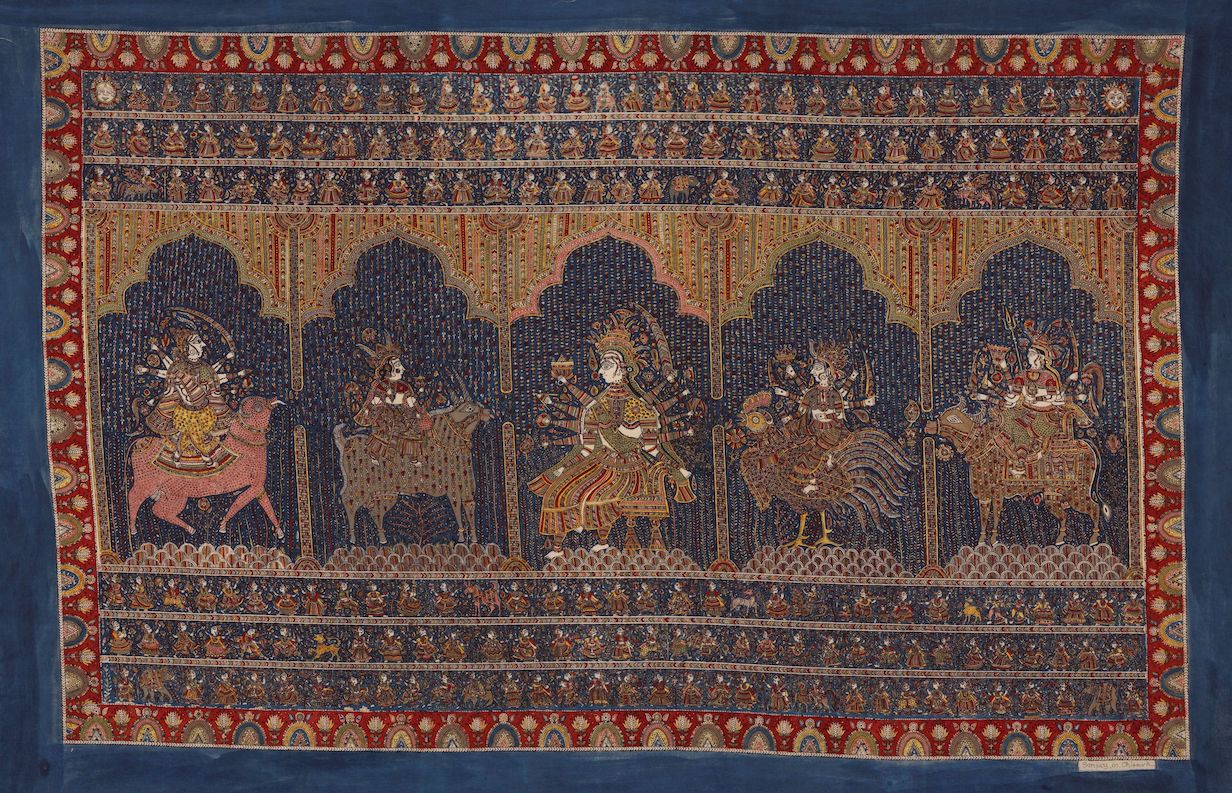
Natural dyes like indigo are used in the making of Mata-ni-Pachedi paintings. Painting by Sanjay Chitara © Sarmaya Arts Foundation. (2017.17.1)
The last two millennia of indigo’s economic history are neatly encapsulated in its name. ‘Indigo’ derives from the Greek ‘indikon’ or Latinised ‘indicum’, which meant ‘substance from India’. As the primary supplier of indigo to Europe during the Graeco-Roman period (332 BCE – 395 CE), India was the earliest major centre for its production and processing. As a dye, indigo imparted a brilliant blue to fabrics and is unique in its ability to impart surface colour while only partially penetrating fibres. The chroniclers of Mughal India have attested to the high level of indigo output on the Indian subcontinent. From the mid-17th century to the end of the 19th century, plant-based indigo ruled the world of dyes, earning it the moniker of ‘blue gold’.
References
The Buddhist Cave Temples of India, Owen C Kail
The History of Sugar by Kurush Dalal, Peepul Tree World (Live History India)
Sharma H. (2015). Meditation: Process and effects. Ayu, 36(3), 233–237.
Sitar and Sarod in the 18th and 19th Centuries, Allyn Miner
How Indian textiles, from Kashmir to Kanyakumari, travelled the world and back, Ekta Mohta, Hindustan Times



